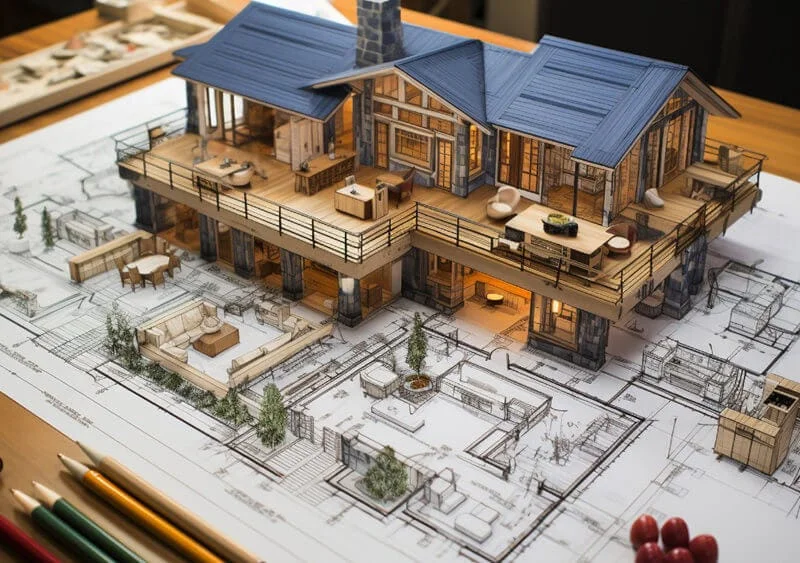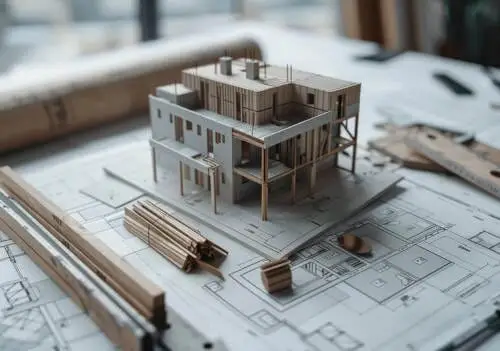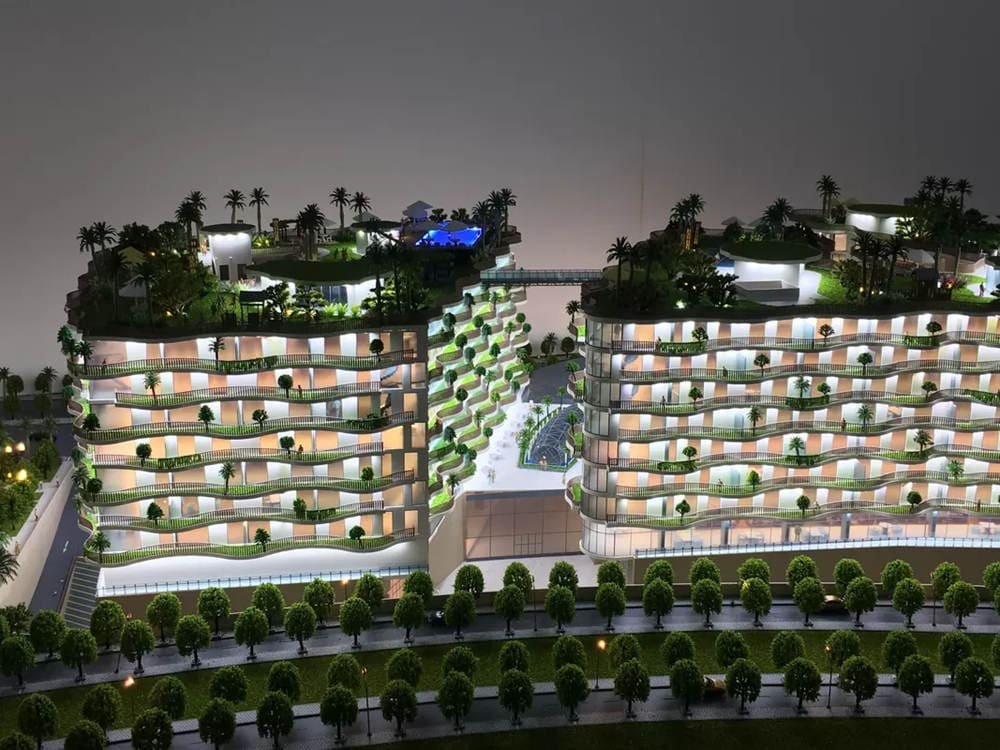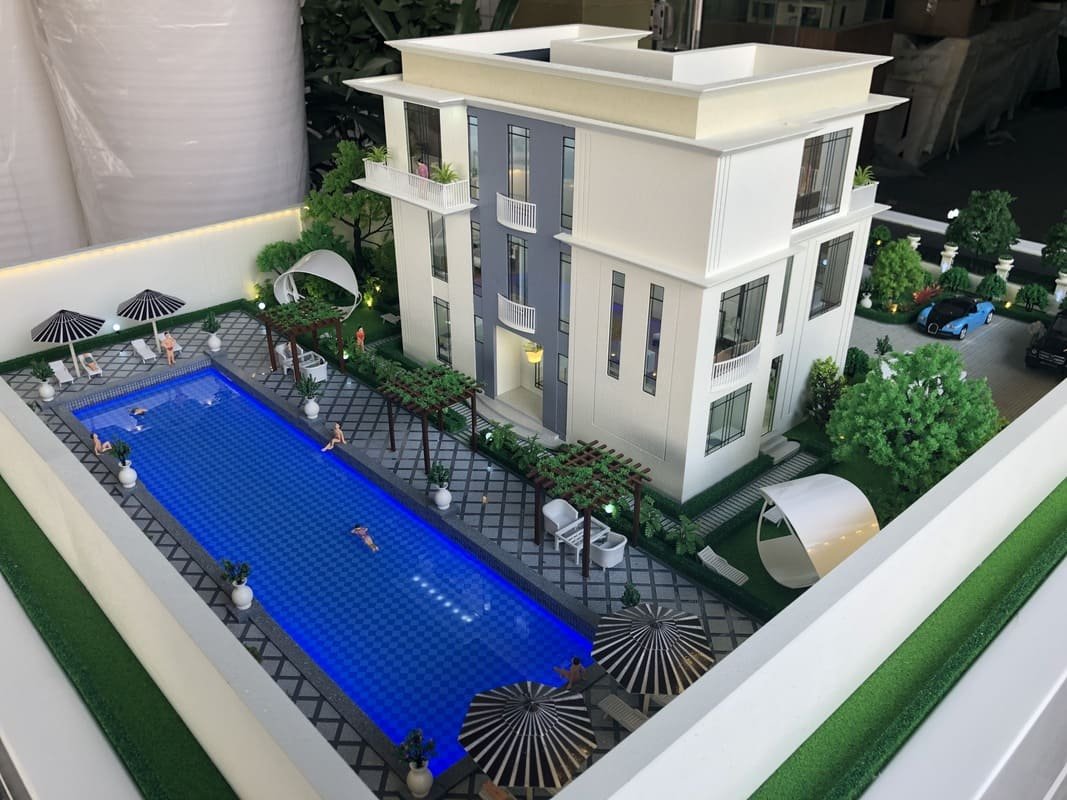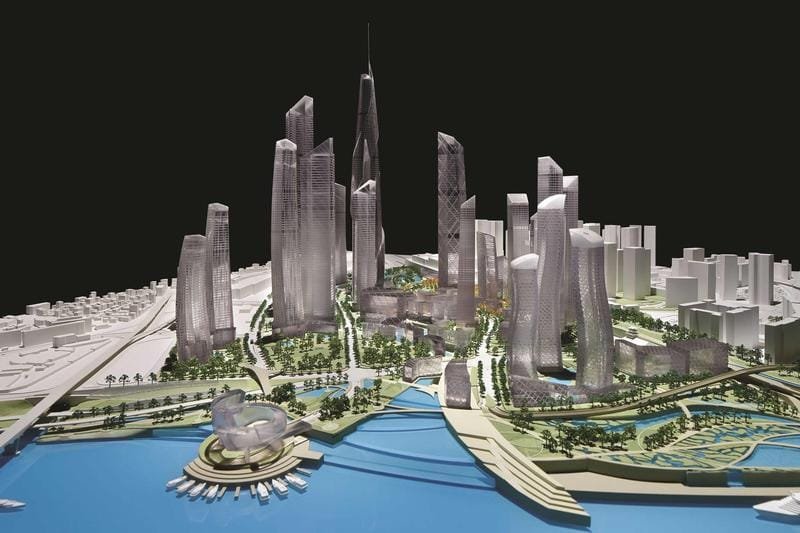في عالم النماذج المعمارية, المباني هي نجوم العرض. ولكن ما الذي يجلب المشروع إلى الحياة حقًا, وترسيخها في واقع يمكن تصديقه, هو المشهد. إن المناظر الطبيعية التي تم تنفيذها بشكل جيد تحول النموذج من دراسة معمارية بسيطة إلى لقمة العيش, عالم التنفس. إنه نسيج العشب, وميض الماء, وحفيف الأشجار الذي يخلق اتصالاً عاطفياً ويبيع الرؤية. يتعمق هذا الدليل في عالم آسر لنماذج المناظر الطبيعية, استكشاف الغرض منها, الخلق, والأسرار المهنية لتحقيق الواقعية المفرطة. اكتشف لماذا تعد هذه الإبداعات المعقدة أكثر من مجرد عروض جميلة - فهي أدوات قوية للتواصل, تخطيط, والإلهام.
جدول المحتويات
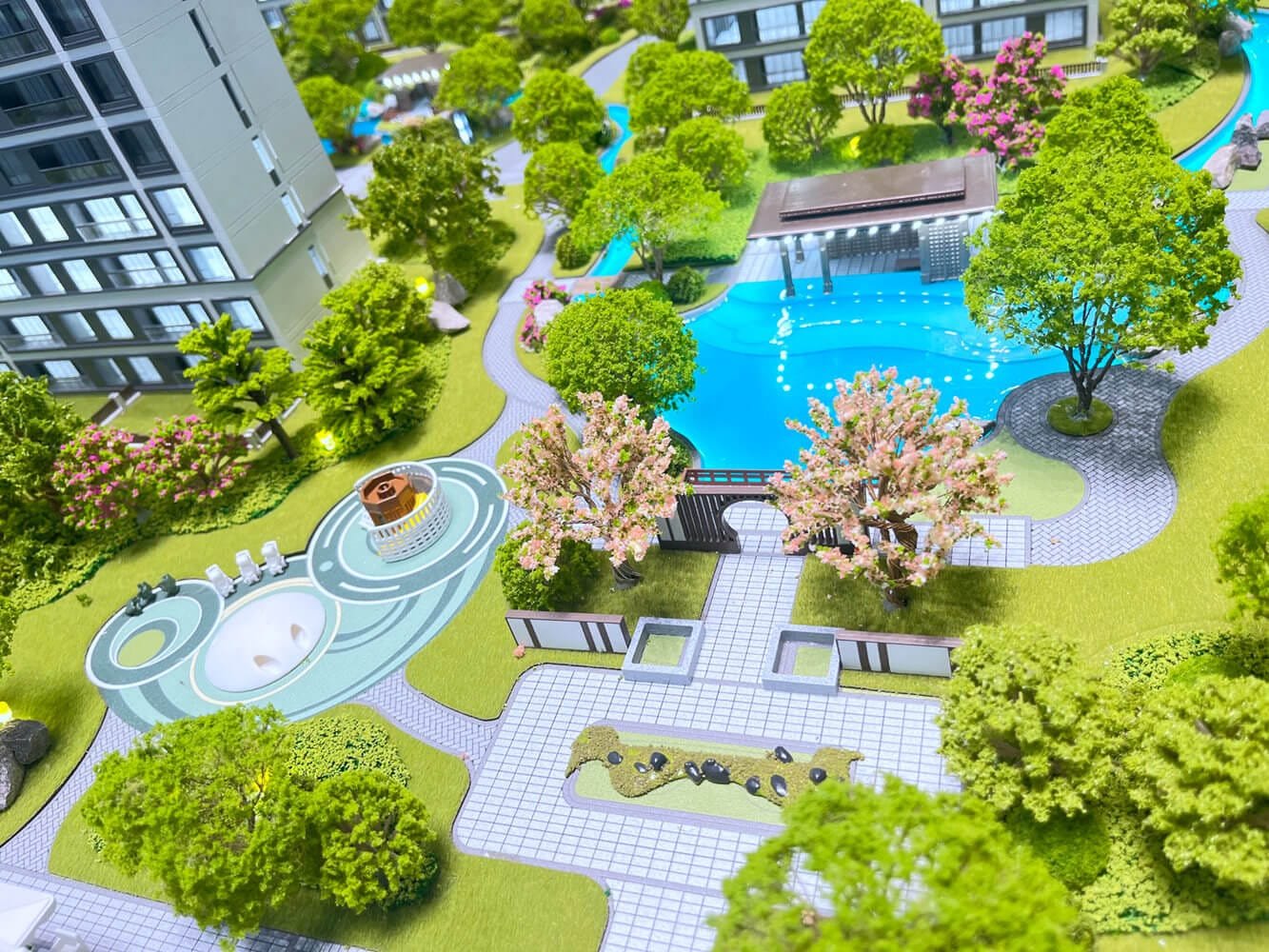
ما هو بالضبط نموذج المناظر الطبيعية؟?
نموذج المناظر الطبيعية هو تمثيل ثلاثي الأبعاد لمنطقة جغرافية, موقع معماري, أو البيئة الحضرية على نطاق مخفض. يمكن أن تتراوح هذه النماذج من دراسات جماهيرية بسيطة إلى صور مفصلة للغاية للتضاريس, الغطاء النباتي, المباني, والبنية التحتية. إنها بمثابة أدوات لا تقدر بثمن للمهندسين المعماريين, المخططين الحضريين, المهندسين المعماريين المناظر الطبيعية, المطورين, والمعلمين لتوصيل مفاهيم التصميم, تحليل العلاقات المكانية, وإشراك أصحاب المصلحة. في سياق مشروع أكبر, وهذا عنصر أساسي لما نسميه فن نموذج المخطط الرئيسي.
نماذج المناظر الطبيعية مصنوعة من مواد مختلفة, بما في ذلك الورق المقوى, رغوة, خشب, بلاستيك, وحتى المكونات المطبوعة ثلاثية الأبعاد. يعتمد مستوى التفاصيل والواقعية في النموذج على الغرض المقصود منه ومتطلبات العميل. تركز بعض النماذج على نقل الكتلة الشاملة للمشروع وشكله, بينما يقوم الآخرون بتكرار كل شجرة بدقة, واجهة المبنى, وتجهيزات الشوارع. إن البراعة الفنية والحرفية المشاركة في إنشاء نموذج مناظر طبيعية عالي الجودة أمر رائع حقًا.
لماذا تعتبر نماذج المناظر الطبيعية مهمة في الهندسة المعمارية والتصميم؟?
تلعب نماذج المناظر الطبيعية دورًا حاسمًا في العملية المعمارية والتصميمية لعدة أسباب. أولاً, أنها توفر تمثيلاً ملموسًا وسهل الفهم لمشروع لا يمكن للرسومات والعروض ثنائية الأبعاد مطابقته. يمكن للعملاء وأصحاب المصلحة التجول حول النموذج, مشاهدته من زوايا مختلفة, واكتساب فهم شامل للعلاقات المكانية وقصد التصميم. وهذا مبدأ أساسي نغطيه في صفحتنا الأساسية, الدليل النهائي للنماذج المعمارية الراقية.
ثانيًا, تسهل نماذج المناظر الطبيعية التعاون والتواصل بين فرق التصميم. المهندسين المعماريين, المهندسين, المهندسين المعماريين المناظر الطبيعية, ويمكن للاستشاريين الآخرين استخدام النموذج كنقطة محورية للمناقشات, تحديد الصراعات المحتملة, وتحسين التصميم بشكل تعاوني. تساعد هذه العملية التكرارية على ضمان أن المشروع النهائي يلبي احتياجات العميل ويتكامل بسلاسة مع البيئة المحيطة به.
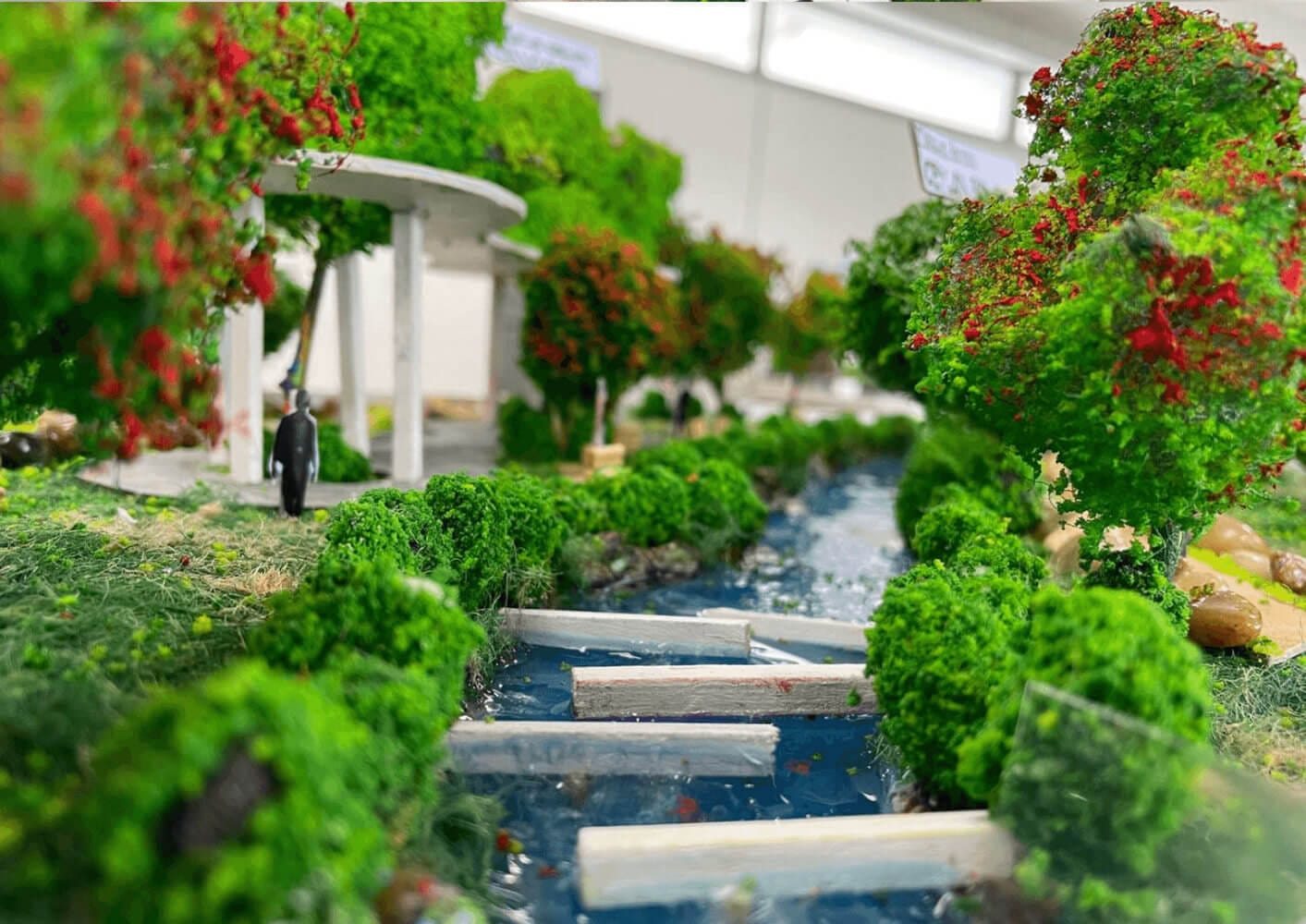
ما هي الأنواع المختلفة لنماذج المناظر الطبيعية؟?
نماذج المناظر الطبيعية تأتي في أنواع مختلفة, كل منها يخدم غرضًا محددًا. النماذج الطبوغرافية التركيز على تمثيل تغيرات التضاريس والارتفاع للموقع. هذه النماذج ضرورية لفهم أنماط الصرف, استقرار المنحدر, والتأثير البصري للمشروع على المناظر الطبيعية. النماذج المعمارية دمج المباني والهياكل في المناظر الطبيعية, إظهار العلاقة بين البيئة المبنية ومحيطها. للمشاريع واسعة النطاق, نماذج المناظر الطبيعية يتم استخدامها لتصور الخطة الرئيسية الشاملة, بما في ذلك المباني المتعددة, الشوارع, والمساحات المفتوحة.
النماذج المفاهيمية غالبًا ما يتم إنشاؤها خلال المراحل الأولى من التصميم لاستكشاف خيارات التجميع والتخطيط المختلفة. عادة ما تكون هذه النماذج أقل تفصيلاً وتركز على الشكل العام والتنظيم المكاني للمشروع. إنها أدوات قوية للفوز بهيئة المحلفين, استراتيجية نستكشفها كيف تُحدِث نماذج المفاهيم تأثيرًا رابحًا في المسابقات. نماذج العرض مفصلة للغاية وواقعية, يهدف إلى إقناع العملاء وأصحاب المصلحة وإظهار هدف التصميم النهائي. غالبًا ما تشتمل هذه النماذج على مناظر طبيعية معقدة, إضاءة, وحتى الأشخاص والمركبات المصغرة. ودعونا لا ننسى الأمر الحاسم نموذج المناظر الطبيعية الهندسة المعمارية الذي يسد الفجوة بين الهيكل وبيئته.
كيف يتم إنشاء نماذج المناظر الطبيعية? عملية خطوة بخطوة
يعد إنشاء نموذج أفقي عملية متعددة الخطوات تتطلب مهارة, دقة, والاهتمام الهائل بالتفاصيل. يبدأ بجمع المعلومات حول الموقع, بما في ذلك المسوحات الطبوغرافية, الرسومات المعمارية, وخطط المناظر الطبيعية. يتم بعد ذلك استخدام هذه البيانات لإنشاء خريطة أساسية وتحديد المقياس المناسب للنموذج. يعد اختيار المقياس الصحيح خطوة أولى حاسمة, التي نفصلها في دليلنا إيجاد التوازن المثالي بين الحجم والتفاصيل.
التالي, يقوم صانع النموذج ببناء التضاريس باستخدام طبقات من الرغوة, كرتون, أو مواد أخرى. تتم إضافة المباني والهياكل, تليها عناصر المناظر الطبيعية مثل الأشجار, شجيرات, وميزات المياه. أخيراً, التفاصيل مثل الطرق, الأرصفة, ضوء الشوارع, وتم دمج اللافتات لإضفاء الحيوية على النموذج. غالبًا ما تتضمن العملية برمتها مزيجًا من تقنيات الصناعة اليدوية وطرق التصنيع الرقمية, مثل القطع بالليزر والطباعة ثلاثية الأبعاد. هذا المزيج من التقنيات هو شيء نستكشفه الحرف الحديثة مقابل. الأعمال اليدوية التقليدية.
ما هي المواد المستخدمة في صنع نماذج المناظر الطبيعية?
يعتمد اختيار المواد لنموذج المناظر الطبيعية على المستوى المطلوب من التفاصيل, متانة, والميزانية. للحصول على نظرة عامة كاملة, يجب عليك استشارة لدينا الدليل الشامل للمواد النموذجية. وتشمل المواد المشتركة:
- لوح الرغوة: خفيفة الوزن وسهلة القطع, مثالية لإنشاء التضاريس وأشكال البناء.
- كرتون: متعددة الاستخدامات وغير مكلفة, مناسبة للدراسات الجماهيرية والنماذج المفاهيمية.
- خشب: متينة وممتعة من الناحية الجمالية, غالبا ما تستخدم للألواح والعناصر الهيكلية.
- بلاستيك: متوفر في أشكال مختلفة, بما في ذلك الأوراق, قضبان, والأنابيب, لإنشاء مكونات مفصلة.
- الأكريليك: شفافة وقوية, مثالية لميزات المياه والأغطية الواقية.
- 3الراتنجات المطبوعة على شكل حرف D: السماح بإنشاء أشكال معقدة ومعقدة, التكنولوجيا التي نستكشفها في منطقتنا دليل الطباعة ثلاثية الأبعاد.
- مواد المناظر الطبيعية: تشمل الأشجار النموذجية, شجيرات, عشب, الحصى, وتأثيرات المياه.
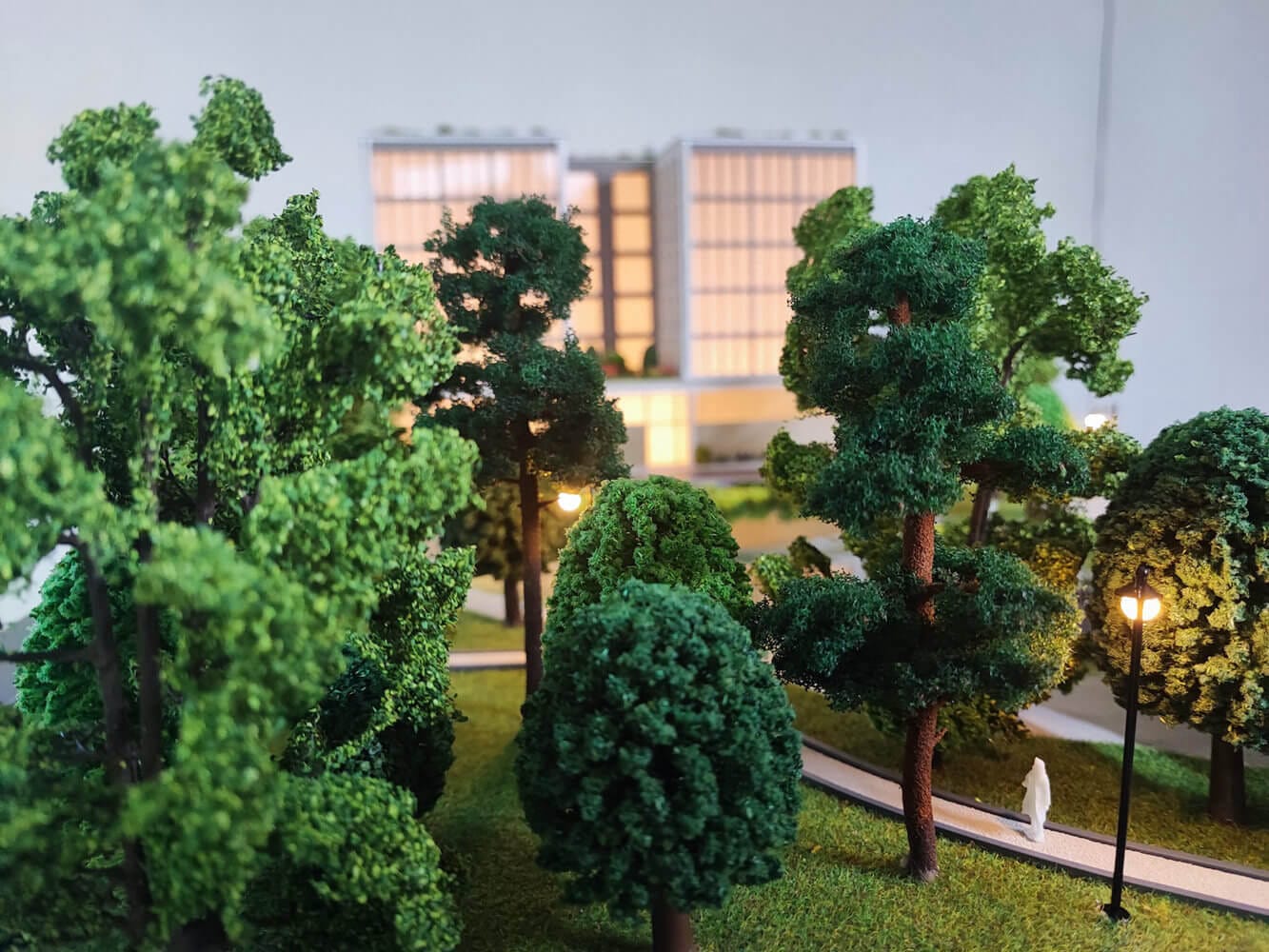
كيف تعمل نماذج المناظر الطبيعية على تعزيز التواصل والتعاون?
تعد نماذج المناظر الطبيعية أدوات اتصال قوية تعمل على سد الفجوة بين الرسومات الفنية وفهم العميل. أنها تسمح للمهندسين المعماريين والمصممين بشرح العلاقات المكانية المعقدة, مفاهيم التصميم, والآثار البيئية بطريقة واضحة ويمكن الوصول إليها. يمكن للعملاء تصور المشروع المقترح بسهولة, طرح الأسئلة, وتقديم ردود الفعل, مما يؤدي إلى عملية تصميم أكثر تعاونية ومستنيرة. وهذا أمر حيوي بشكل خاص في العقارات, حيث يمكن رؤية واضحة تؤثر بشكل كبير على المبيعات.
بالإضافة إلى, تسهل نماذج المناظر الطبيعية التواصل بين مختلف أعضاء فريق التصميم. المهندسين, المهندسين المعماريين المناظر الطبيعية, ويمكن للاستشاريين الآخرين استخدام النموذج كنقطة مرجعية مشتركة لمناقشة القضايا الفنية, تحديد الصراعات المحتملة, وتنسيق عملهم. يساعد هذا النهج التعاوني على ضمان تكامل المشروع النهائي بشكل جيد ويلبي احتياجات جميع أصحاب المصلحة. وإذا كنت في حاجة بسيطة المناظر الطبيعية النموذجية للحصول على وجهة نظرك عبر, هناك الكثير من الخيارات لذلك أيضًا.
ما هو دور التكنولوجيا في صنع نماذج المناظر الطبيعية؟?
أحدثت التكنولوجيا ثورة في مجال صنع نماذج المناظر الطبيعية, تمكين قدر أكبر من الدقة, كفاءة, والواقعية. تصميم بمساعدة الكمبيوتر (كندي) يسمح البرنامج لصانعي النماذج بإنشاء تمثيلات رقمية دقيقة للمواقع والمباني, والتي يمكن استخدامها بعد ذلك لإنشاء أنماط القطع لقواطع الليزر والطابعات ثلاثية الأبعاد.
تتيح تقنية القطع بالليزر التصنيع الدقيق والسريع للمكونات المعقدة من مواد مختلفة, مثل لوحة الرغوة, أكريليك, والخشب. 3تتيح الطباعة ثلاثية الأبعاد إنشاء أشكال معقدة وعضوية, مثل الأشجار, منحوتات, والخصائص الطبوغرافية. لا تعمل هذه التقنيات على تسريع عملية صنع النماذج فحسب، بل تعمل أيضًا على توسيع إمكانيات إنشاء تمثيلات واقعية ومفصلة للغاية. يعد تحديد مصادر هذه التقنيات سببًا رئيسيًا لاستكشاف العديد من الشركات ميزة الصين لمشاريعهم.
ما هي بعض التطبيقات الواقعية لنماذج المناظر الطبيعية؟?
تُستخدم نماذج المناظر الطبيعية في مجموعة واسعة من التطبيقات, مشتمل:
- التصميم المعماري: تصور أشكال البناء, العلاقات المكانية, وتكامل الموقع.
- التخطيط الحضري: تحليل تأثير التطويرات المقترحة على النسيج الحضري والبيئة.
- هندسة المناظر الطبيعية: تصميم الحدائق, حدائق, وغيرها من المساحات الخارجية.
- التطوير العقاري: تسويق وبيع العقارات للمشترين المحتملين.
- تقييم الأثر البيئي: محاكاة تأثيرات المشاريع على الموارد الطبيعية والنظم البيئية.
- المشاركة العامة: توصيل المشاريع المعقدة إلى المجتمع وجمع التعليقات.
- معروضات المتحف: إنشاء عروض تفاعلية تعمل على تثقيف الزوار وإشراكهم.
- السينما والتلفزيون: بناء مجموعات مصغرة للمؤثرات الخاصة والسرد البصري للقصص.
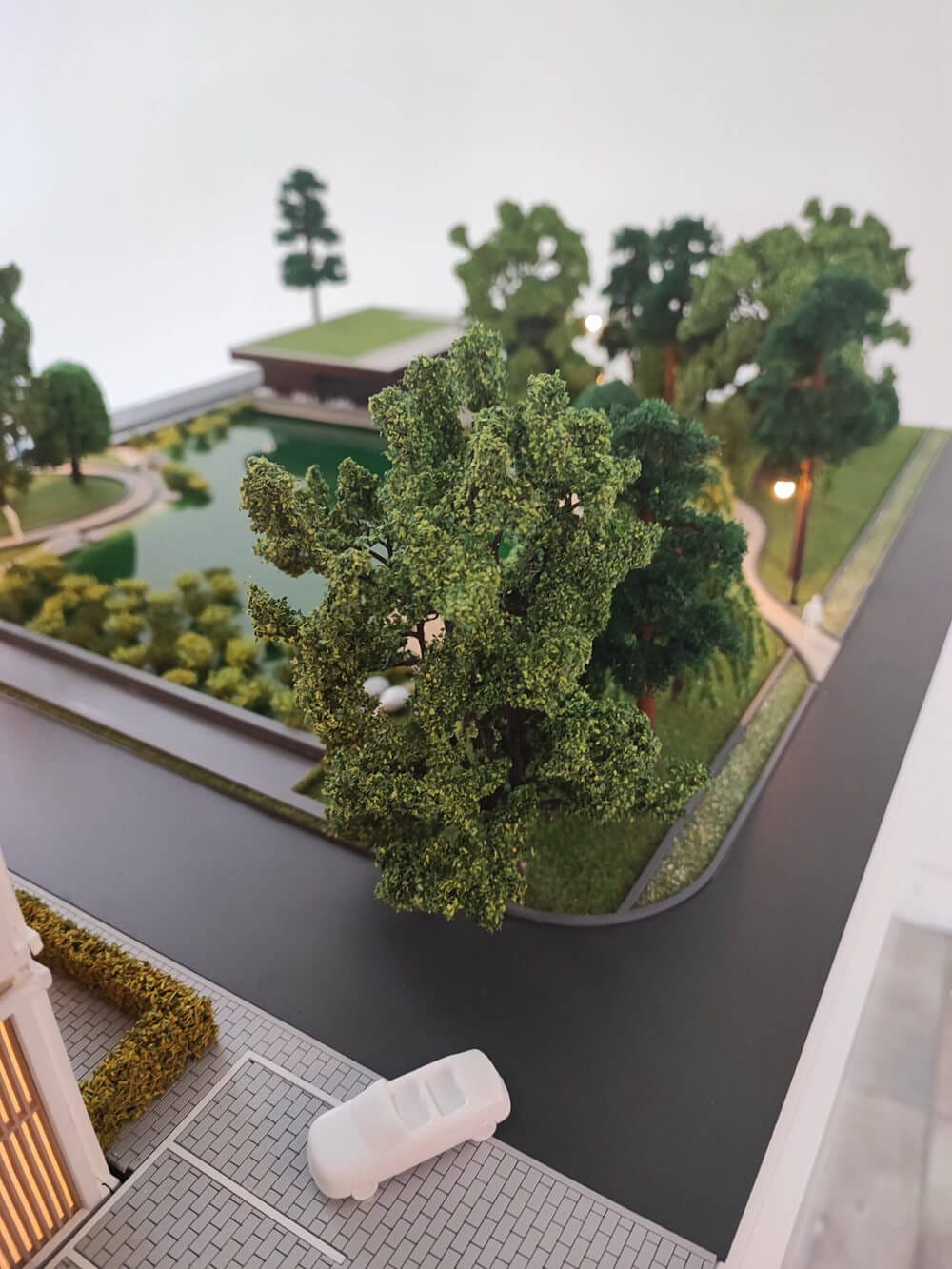
كيفية اختيار صانع نماذج المناظر الطبيعية المناسب?
يعد اختيار صانع نماذج المناظر الطبيعية المناسب أمرًا بالغ الأهمية لضمان نجاح مشروعك. إنه قرار مهم يتطلب فحصًا دقيقًا. النظر في العوامل التالية:
- الخبرة والخبرة: ابحث عن صانع نماذج يتمتع بسجل حافل في إنشاء نماذج عالية الجودة لمشاريع مماثلة.
- مَلَفّ: قم بمراجعة محفظتهم لتقييم براعتهم واهتمامهم بالتفاصيل.
- التواصل والتعاون: اختر صانع نموذج يستجيب, صريح, وعلى استعداد للتعاون معك طوال العملية. وهذا أمر بالغ الأهمية بشكل خاص عندما إدارة المشاريع النموذجية في الخارج.
- التكنولوجيا والمعدات: تأكد من حصولهم على أحدث التقنيات والمعدات لإنتاج نماذج دقيقة ومفصلة.
- الميزانية والجدول الزمني: ناقش متطلبات ميزانيتك والجدول الزمني مقدمًا وتأكد من قدرة صانع النماذج على التنفيذ ضمن هذه القيود.
للحصول على دليل الفحص الكامل, لقد أنشأنا قائمة 10 الأسئلة الهامة التي يجب طرحها قبل تعيين صانع النماذج.
كم تكلفة نموذج المناظر الطبيعية?
تختلف تكلفة نموذج المناظر الطبيعية بشكل كبير اعتمادًا على عوامل مثل الحجم, تعقيد, مستوى التفاصيل, مواد, وتجربة صانع النموذج. يمكن أن تكلف النماذج المفاهيمية البسيطة بضع مئات من الدولارات, في حين أن نماذج العرض التفصيلية للغاية يمكن أن تكلف عشرات الآلاف من الدولارات أو أكثر.
للحصول على تقدير دقيق, من الضروري تزويد صانع النماذج بمعلومات مفصلة حول مشروعك, بما في ذلك خطط الموقع, الرسومات المعمارية, والمستوى المطلوب من التفاصيل. من المهم أيضًا مراعاة القيمة التي يمكن أن يجلبها النموذج عالي الجودة لمشروعك, مثل تحسين الاتصالات, تعزيز عملية صنع القرار, وزيادة رضا العملاء. للانهيار الكامل, يرجى الاطلاع على دليلنا, تفريغ 5 العوامل الرئيسية للتسعير النموذجي المعماري.
| نوع النموذج | التكلفة التقريبية | وصف |
|---|---|---|
| النموذج المفاهيمي/الجماهيري | $500 – $3,000 | التمثيل الأساسي لأشكال البناء وتخطيط الموقع. تفاصيل محدودة. |
| النموذج المعماري التفصيلي | $3,000 – $15,000+ | يتضمن تفاصيل بناء هامة, المناظر الطبيعية, ومميزات الموقع. |
| نموذج الخطة الرئيسية/واسعة النطاق | $10,000 – $50,000+ | يمثل مساحة كبيرة بها مباني متعددة, بنية تحتية, والمناظر الطبيعية التفصيلية. |
| نموذج العرض/المبيعات | $5,000 – $20,000+ | نموذج عالي الجودة بتفاصيل استثنائية, إضاءة, والتشطيب لعروض العملاء والمبيعات. |
ما هي أحدث الاتجاهات في صنع نماذج المناظر الطبيعية?
يتطور مجال صنع نماذج المناظر الطبيعية باستمرار, مع ظهور اتجاهات جديدة تدفع حدود الواقعية والتفاعلية. بعض من أحدث الاتجاهات تشمل:
- تكامل النماذج الرقمية والمادية: الجمع بين النماذج المادية والواقع المعزز (AR) والواقع الافتراضي (الواقع الافتراضي) تقنيات لخلق تجارب غامرة وتفاعلية.
- استخدام المواد المستدامة: استخدام مواد وعمليات صديقة للبيئة لتقليل الأثر البيئي لصناعة النماذج.
- النماذج الحركية: دمج الأجزاء المتحركة والعناصر الديناميكية لمحاكاة عمليات العالم الحقيقي, مثل تدفق حركة المرور وحركة المياه.
- 3المناظر الطبيعية المطبوعة D: استخدام تقنيات الطباعة ثلاثية الأبعاد المتقدمة لإنشاء تضاريس ونباتات مفصلة وواقعية للغاية.
- الإضاءة والصوت التفاعلي: مضيفا تأثيرات الإضاءة الاستراتيجية ومقاطع صوتية لتعزيز الواقعية ومشاركة النماذج.
نستكشف هذه الحدود الجديدة والمثيرة في مقالتنا, مستقبل صنع النماذج: التكنولوجيا التفاعلية و AR.
خاتمة: القوة الدائمة لنماذج المناظر الطبيعية
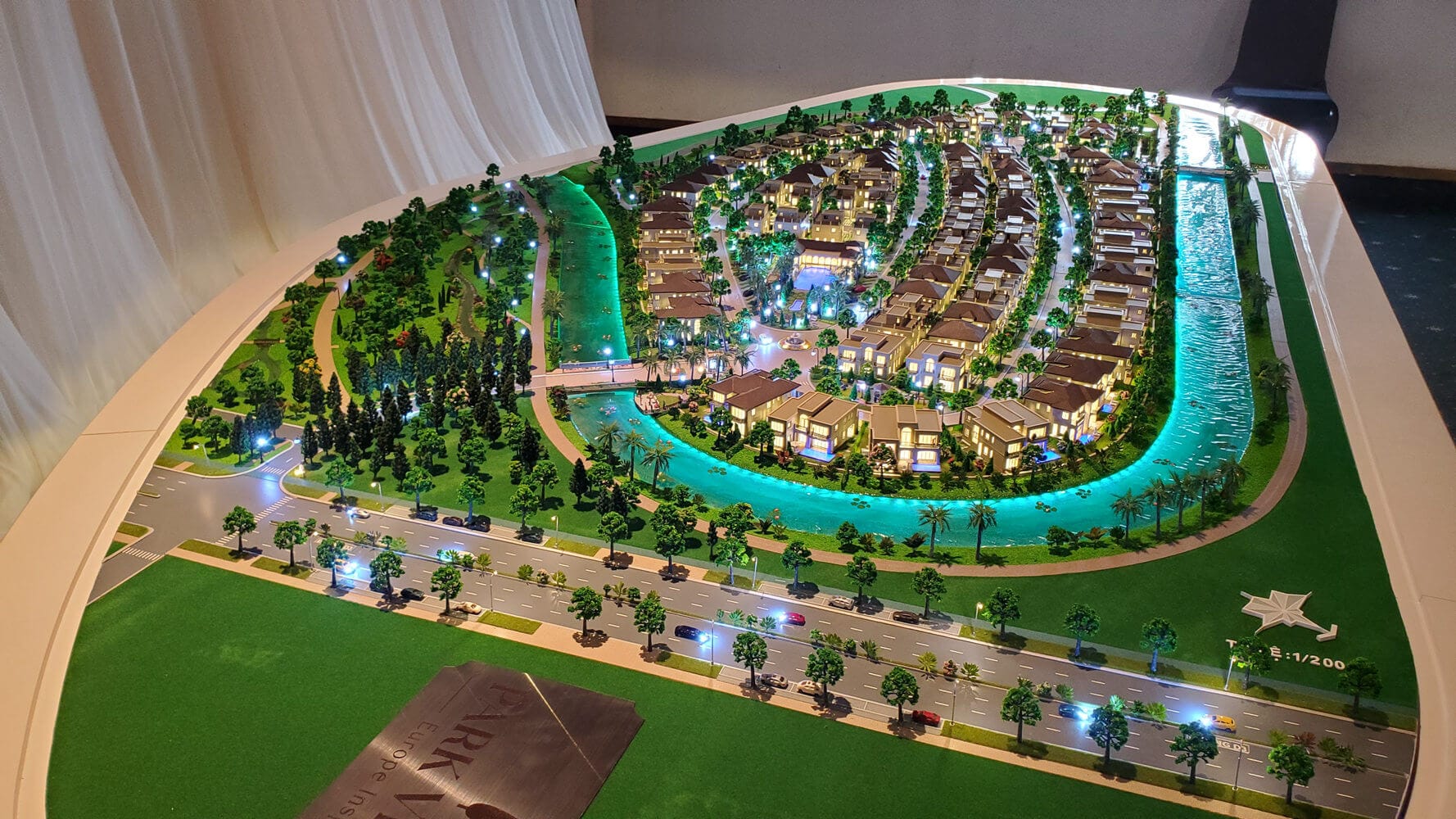
تظل نماذج المناظر الطبيعية أداة لا غنى عنها للمهندسين المعماريين, المصممين, وأي شخص يسعى إلى تصور وفهم البيئة المبنية والطبيعية. رغم التقدم في التكنولوجيا الرقمية, توفر الطبيعة الملموسة وثلاثية الأبعاد للنماذج المادية طريقة فريدة وجذابة لاستكشاف العلاقات المكانية, توصيل أفكار التصميم, وإلهام الإبداع. مع استمرار تطور التكنولوجيا, يمكننا أن نتوقع المزيد من نماذج المناظر الطبيعية المبتكرة والغامرة التي تطمس الخطوط الفاصلة بين الواقعي والافتراضي. سواء كان ذلك تفصيليا نموذج المناظر الطبيعية مدينة مترامية الأطراف أو بسيطة نموذج المناظر الطبيعية من موقع بناء واحد, هذه العوالم المصغرة لديها القدرة على تشكيل فهمنا للعالم من حولنا.
الوجبات السريعة الرئيسية:
- توفر نماذج المناظر الطبيعية طريقة ملموسة لفهم العلاقات المكانية.
- فهي حاسمة للتواصل في الهندسة المعمارية والتصميم.
- توجد أنواع مختلفة من النماذج, خدمة أغراض مختلفة.
- إن إنشاء النموذج هو عملية تفصيلية تتضمن مواد وتقنيات متنوعة.
- تعمل النماذج على تعزيز التعاون وفهم العميل.
- يعد اختيار صانع النموذج المناسب أمرًا حيويًا لنجاح المشروع, وهي عملية يجب القيام بها بعناية, خاصة إذا كان النموذج بحاجة إلى الشحن, كما هو مفصل في لدينا دليل التعبئة والتغليف والنقل.
- تختلف التكاليف بشكل كبير اعتمادًا على التعقيد والتفاصيل.
- يتطور المجال مع اتجاهات جديدة في التكنولوجيا والاستدامة.
على استعداد لإضفاء الحيوية على رؤيتك من خلال نموذج مناظر طبيعية آسر? اتصل بنا اليوم لمناقشة مشروعك ومعرفة كيف يمكن لصانعي النماذج الخبراء لدينا مساعدتك في إنشاء تمثيل مذهل وغني بالمعلومات لتصميمك.


